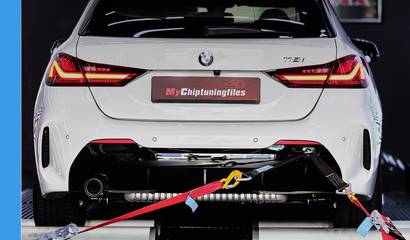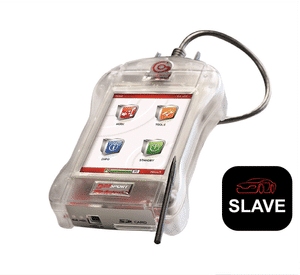Sunday 16 November

Alright, let’s be real—nobody likes seeing a check engine light pop up. It’s that annoying little reminder that something might be wrong under the hood. And when you scan the car and it throws up a P0420 code, you’re left scratching your head. What does that even mean? Is it serious? Is your car about to explode or is it something you can ignore for a while?
You’ve probably asked yourself questions like:
- What exactly is the fault code P0420?
- Does the p0420 engine code mean my catalytic converter is shot?
- Is the OBD code P0420 something I can fix myself or should I panic and call a mechanic?
Well, relax. You’re in the right place.
This post is gonna break it all down for you in plain language. No fluff. No cryptic tech talk. Just what the engine code P0420 means, what causes it, how to fix it, and what to look out for—whether you’re wrenching in your own garage or trying not to get ripped off at a shop.
Let’s get into it.
What Is the P0420 Code, Anyway?
So, the P0420 code stands for “Catalyst System Efficiency Below Threshold (Bank 1).”
Sounds fancy, right? But here’s the real deal: your car’s computer is saying that the catalytic converter isn’t doing its job as well as it should. The catalytic converter (or "cat," as most folks call it) is the part of your exhaust system that helps reduce harmful emissions before they exit the tailpipe.
Now, your engine control module (ECM) or powertrain control module (PCM)—whatever your car calls it—monitors how well that cat is working by looking at the oxygen sensors. One sensor is before the cat (upstream), and one is after it (downstream). If both sensors start reading similar values, it means the cat isn't doing much anymore. And that’s when the fault code P0420 shows up.
The keyword there is “efficiency.” It’s not that your engine is broken. It’s more that your emissions system isn’t up to snuff. But, don’t ignore it just because your car still drives.
The Difference Between P0420 Code and P0430
Quick sidebar—because this one gets asked a lot.
- P0420 code = Catalyst efficiency is low on Bank 1
- P0430 code = Catalyst efficiency is low on Bank 2
If you have a V6 or V8 engine, you’ve got two banks. Bank 1 is usually the side with cylinder #1. Inline engines only have one bank—so you’ll usually just see the P0420 engine code if there’s a problem.
Same issue, just a different side of the engine.
Also Read: Understanding Trasdata: A Complete Guide to Dimsport's Master Tools in the USA
What Triggers the Fault Code P0420?
There are a bunch of reasons your car might throw the OBD code P0420, and not all of them mean your catalytic converter is toast. Let's break them down into common causes:
1. A Bad Catalytic Converter
Yeah, the cat could actually be failing. It happens over time, especially if you’ve been running rich, burning oil, or using cheap fuel. Cats don’t like contamination. If it’s broken inside or clogged, the oxygen sensors will definitely notice.
2. Faulty Oxygen Sensors
Your upstream and downstream O2 sensors are the eyes of the ECU when it comes to emissions. If one of them is reading wrong—either because it’s old, lazy, or coated in soot—it could mimic the signs of a bad cat and trip the p0420 code.
3. Exhaust Leaks
A small leak before or around the catalytic converter (especially near the O2 sensors) can mess with the sensor readings. That messes with the ECU's interpretation of what the cat is doing—even if it's perfectly fine.
4. Engine Running Rich or Burning Oil
If your engine is dumping too much fuel (running rich), or if it's burning oil, that junk goes right into the catalytic converter. Over time, it’ll poison the catalyst. Once it’s contaminated, it stops doing its job.
5. ECU Calibration Errors
Sometimes the engine code P0420 can pop up after a software update or if the ECU is just being picky. It’s rare, but we’ve seen cases where a reflash or custom tune helped resolve recurring p0420 engine code errors.
Signs You Might See with a P0420 Engine Code
Here’s the thing—many drivers with a P0420 code won’t feel anything weird. The car might run perfectly fine, and the only clue is the check engine light.
But in some cases, you might notice:
- Slightly reduced fuel economy
- A drop in power at higher RPMs
- A sulfur or “rotten egg” smell (yep, that’s the cat)
- Rattling noises from underneath the car (a busted cat can break apart inside)
- Failed emissions test
Still, most people don’t notice any drivability issues right away. That’s why it’s tempting to ignore the light—but ignoring it can lead to bigger issues later on.
How to Diagnose the OBD Code P0420
Let’s say you’ve scanned the car and confirmed the obd code P0420. What now?
Start with the basics:
Step 1: Visual Inspection
Look for any obvious damage or leaks in the exhaust system. Check for broken hangers, holes, or cracks—especially near the catalytic converter or sensors.
Step 2: Check Oxygen Sensor Readings
Use a scan tool that shows live data. The upstream O2 sensor should bounce around a lot (rich to lean), but the downstream sensor should stay fairly stable if the cat is working. If both are moving in sync, the cat might be dead—or the downstream sensor is bad.
Step 3: Monitor Fuel Trim
Look at short-term and long-term fuel trims. If the engine is running lean or rich, it could be causing problems upstream that affect the catalytic converter.
Step 4: Smoke Test (Optional)
If you suspect a leak, a smoke test can help you find it. It’s more accurate than just listening for hissing sounds.
Step 5: Check for Related Codes
Sometimes the p0420 code shows up alongside other trouble codes. Misfires, fuel system codes, or upstream sensor faults could be the root cause.
How to Fix the P0420 Code
Alright, here’s the part you really came for. How do you fix the engine code P0420?
1. Replace the Catalytic Converter
Yeah, it’s the obvious one—but also the most expensive. OEM cats can be crazy pricey. Aftermarket options are available, but be careful—some don’t pass emissions tests or fit properly. Always check your local laws, especially in places like California.
2. Replace the Oxygen Sensors
This is cheaper and sometimes fixes the issue—especially if the sensors are old. Try replacing the downstream sensor first if the cat looks fine.
3. Fix Exhaust Leaks
Even a small leak can cause enough of a problem to trigger the p0420 code. Seal it up with proper welding or exhaust repair kits—not duct tape.
4. Tune the ECU
In some cases, especially with modified cars or custom exhausts, the cat may still be working but not within factory spec. A tuner can adjust the ECU to accept the slightly different readings—or even disable rear O2 monitoring for track-only use (check local laws).
5. Clean the Catalytic Converter
Some people try catalytic converter cleaners that go in your fuel tank. These work sometimes—mainly when the cat is just coated in carbon. If it’s physically broken or melted inside, a cleaner won’t help.
Also Read: How to Find the Best Chiptuning File Provider
Is the P0420 Engine Code Dangerous?
It’s not immediately dangerous. Your car will usually still run, drive, and stop just fine. But here’s why you shouldn’t ignore it forever:
- If the cat really is failing, it can get clogged, causing back pressure and performance loss.
- You’ll fail emissions tests.
- A bad cat means your emissions are higher, which isn’t great for the planet.
- If the cat breaks apart inside, it can shoot debris into your muffler or damage other components.
- Other real problems (like a misfire or rich condition) could get ignored if you assume the cat’s the only issue.
So yeah—it’s not an emergency, but it’s something you want to get sorted sooner rather than later.
Can You Clear the Code and Just Keep Driving?
You can. Plenty of people do. But the p0420 engine code will almost always come back unless the root problem is fixed.
Clearing the code doesn’t fix the issue—it just hides it temporarily. And if you’re using an OBD-II inspection system for registration, it’ll catch that the readiness monitors haven’t run.
Some people install O2 sensor spacers or “mini cats” to trick the ECU. Again, that might work, but it’s skirting the line with emissions laws and won’t solve the real problem.
Your Opportunity Starts Here: Start a Chiptuning Business with MyChiptuningfiles
Looking to grow in the automotive world? Now is the perfect time to start a chiptuning business—and MyChiptuningfiles is here to help you every step of the way.
We provide high-quality, ready-to-use ECU tuning files created by experienced professionals using tools like WinOLS. These files are carefully tested and optimized to deliver safe, noticeable improvements in vehicle performance—power, torque, and efficiency. You don’t need deep technical skills to get started. Just upload the original ECU file, and we’ll send you the tuned version, ready to install.
Whether you're starting from scratch or expanding your current automotive services, we make the process simple and reliable. Our support team is always available to answer questions and guide you, so you're never alone.
By working with MyChiptuningfiles, you're offering your customers more than just a service—you're delivering results they can feel on the road. And with consistent file quality and fast turnaround times, your business will gain trust from day one.
Take your first step toward something exciting. Start a chiptuning business with MyChiptuningfiles and turn your passion into a professional service you can be proud of.
Final Thoughts
The p0420 code is one of the most common OBD-II codes out there, and it can definitely cause confusion. It doesn’t always mean your catalytic converter is ruined—but it’s definitely your car’s way of saying something in the emissions system isn’t right.
Whether it’s caused by a failing cat, lazy oxygen sensors, or an upstream issue like a misfire or a leaky exhaust, don’t ignore it for too long. Dig into it, understand what your car’s telling you, and take the right steps to fix it.
So next time someone throws around the fault code P0420, engine code P0420, or OBD code P0420, you’ll know exactly what’s going on—and maybe even help a friend sort it out too.
news.related_news
Chiptuning tools
Whether you own a car, truck or tractor: we have the best equipment and software for tuning your petrol and diesel engine. With our chiptuning tools it is possible to easily read out the original engine software of your vehicle and upload it to our website. And then it's up to us to provide you with high-quality and customized chip tuning files. Curious about our range of chiptuning tools? Check it out via the button below!









